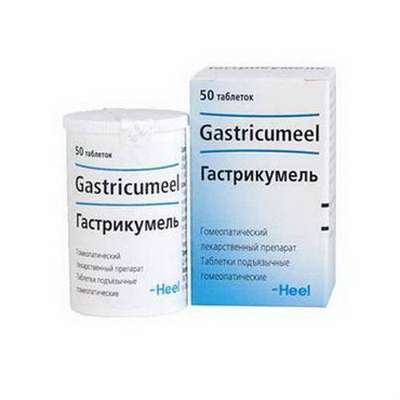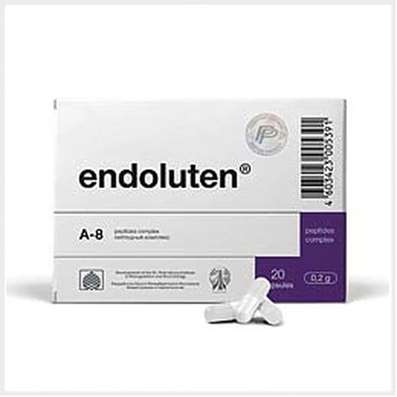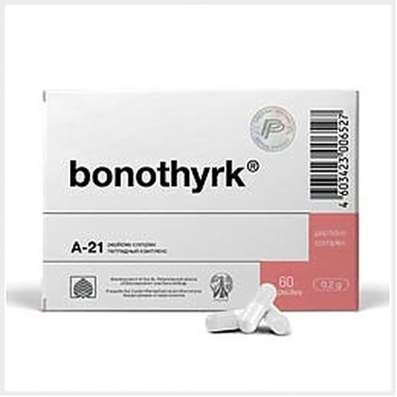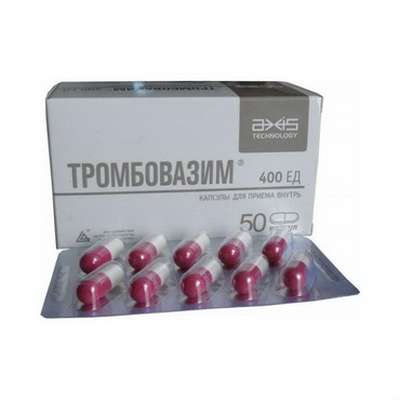Instruction for use: Zodac
I want this, give me price
Dosage form: Drops for ingestion; Syrup; Film-coated tablets
Active substance: Cetirizine
ATX
R06AE07 Cetirizine
Pharmacological groups:
H1-antihistamines
The nosological classification (ICD-10)
H10.1 Acute atopic conjunctivitis: Allergic conjunctivitis; Allergic eye diseases; Allergic conjunctivitis; Allergic conjunctivitis caused by chemical and physical factors; Allergic rhinoconjunctivitis; Allergic inflammation of the eyes; Spring Qatar; Spring keratitis; Spring conjunctivitis; Conjunctivitis allergic; Year-round allergic conjunctivitis; Exacerbation of pollinosis in the form of rhinoconjunctival syndrome; Acute allergic keratoconjunctivitis; Acute allergic conjunctivitis; Superficial bacterial infection of the eyes; Rhinoconjunctivitis; Seasonal allergic conjunctivitis; Seasonal conjunctivitis; SENSORY; Chronic allergic keratoconjunctivitis; Chronic allergic conjunctivitis
J30 Vasomotor and allergic rhinitis: Allergic rhinopathy; Allergic rhinosinusopathy; Allergic diseases of the upper respiratory tract; Allergic rhinitis; Allergic rhinitis seasonal; Vasomotor runny nose; Prolonged allergic rhinitis; All-year-round allergic rhinitis; All-year allergic rhinitis; Year-round or seasonal allergic rhinitis; All-the-year-round rhinitis of an allergic nature; Rhinitis vasomotor allergic; Exacerbation of pollinosis in the form of rhinoconjunctival syndrome; Acute allergic rhinitis; Edema of the nasal mucosa; Edema of the nasal mucosa; Edema of the mucous membrane of the nasal cavity; Swelling of the nasal mucosa; Swelling of the nasal mucosa; Pollinosis; Permanent allergic rhinitis; Rhinoconjunctivitis; Rhinosinusitis; Rhinosinusopathy; Seasonal allergic rhinitis; Seasonal allergic rhinitis; Hay rhinitis; Chronic allergic rhinitis; Allergic diseases of the respiratory tract
J30.1 Allergic rhinitis caused by pollen of plants: Hay fever; Hay fungus; hay fever; Hypersensitivity to pollen of plants; Polyposis allergic rhinosinusitis; Seasonal pollinosis; Seasonal rhinitis
L29 Itching: Itching with partial obstruction of the biliary tract; Dermatitis itchy; Dermatosis with persistent itching; Other itching dermatoses; Itching dermatoses; Itching allergic dermatosis; Itching dermatitis; Itching dermatosis; Itching itch; Excruciating itching; Severe itching; Endogenous itching; Skin itching with dermatosis; Restricted itchy dermatitis; Itching of the skin; Itchy scalp; Itching eczema
L30.9 Unspecified Dermatitis: Allergic dermatoses complicated by a secondary bacterial infection; Anal eczema; Bacterial maturation; Varicose Eczema; Venous dermatitis; Inflammation of the skin; Inflammation of the skin upon contact with plants; Inflammatory Skin Disease; Inflammatory Skin Diseases; Inflammatory Skin Diseases; Inflammatory skin reactions; Inflammatory processes of the skin; Hypostatic dermatitis; Fungal Eczema; Fungal dermatosis; Dermatitis; Dermatitis is stagnant; Dermatitis and eczema in the anal area; Dermatitis acute contact; Perianal dermatitis; Dermatosis; Dermatosis of the scalp; Dermatosis of psoriasis; Dermatosis with persistent itching; Dermatoses; Dermatoses itchy; Other itching dermatoses; Significant eczematous manifestations; Itching with dermatoses; Itching eczema; Itching dermatoses; Itching dermatitis; Itching dermatosis; True eczema; Skin reaction to insect bites; Skin itching with dermatosis; Constitutional eczema; Weeping eczema; Drowsing inflammatory skin disease; Dying Infectious-Inflammatory Skin Disease; Non-allergic dermatitis; Nummular eczema; Acute contact eczema; Acute inflammatory skin disease; Acute dermatosis; Acute severe dermatosis; Perianal dermatitis; Superficial dermatosis; Subacute Contact Eczema; Simple dermatitis; Occupational dermatitis; Psychogenic dermatosis; Bubble dermatitis of newborns; Pustular eruptions; Irritation and redness of the skin; Low-flammable eczema; Dry atrophic eczema; Dry eczema; Toxic dermatitis; Ear eczema like dermatitis; Chronic eczema; Chronic dermatosis; Chronic dermatosis; Chronic common dermatosis; Scaly papular dermatosis; Eczema; Eczema anal region; Eczema of the hands; Eczema Contact; Eczema lichenized; Eczema Nummular; Eczema acute; Eczema acute contact; Eczema subacute; Eczematous dermatitis; Eczema-like rashes; Ecome exogenous; Endogenous eczema; Gluteal dermatitis; Limited itching dermatitis
L50 Urticaria: Idiopathic chronic urticarial; Injury Urticaria; Chronic urticarial; Hives of the newborn
L50.1 Idiopathic urticaria: Idiopathic urticarial; Chronic idiopathic urticaria
T78.3 Angioedema: Edema Quincke; Laryngeal exacerbation with angioneurotic edema; Recurrent angioedema; Allergic edema; Recurrent swelling of Quincy
Composition
Tablets, coated with a film membrane 1 tab.
active substance: Cetirizine dihydrochloride 10 mg
Excipients
Core: lactose monohydrate - 73.4 mg; Corn starch - 33 mg; Povidone 30 - 2.4 mg; Magnesium stearate 1.2 mg
Film membrane: hypromellose 2910/5 - 3.45 mg; Macrogol-6000 - 0.35 mg; Talc - 0.35 mg; Titanium dioxide - 0.8 mg; Simethicone emulsion SE 4 0.05 mg
Drops for oral administration 1 ml
active substance: Cetirizine dihydrochloride 10 mg
Auxiliary substances: methylparahydroxybenzoate; Propyl parahydroxybenzoate; Glycerol; Propylene glycol; Sodium saccharinate dihydrate; Sodium acetate trihydrate; Glacial acetic acid; purified water
Description of dosage form
Tablets: oblong form, covered with a film shell of white or almost white color, with the risk of division from one side.
Drops: transparent, from colorless to light yellow color solution.
Pharmachologic effect
Mode of action - antiallergic.
Pharmacodynamics
Cetirizine belongs to the group of competitive histamine antagonists, blocks H1-histamine receptors, has almost no anticholinergic and antiserotonin action. Has a pronounced anti-allergic effect, prevents development and facilitates the course of allergic reactions. Has antipruritic and anti-exsudative effect. Affects the early stage of allergic reactions, and also reduces the migration of inflammatory cells; Inhibits the selection of mediators involved in a late allergic reaction. Reduces the permeability of capillaries, prevents the development of edema of tissues, relieves spasm of smooth muscles. Eliminates the skin reaction to the introduction of histamine specific allergens, as well as cooling (with cold urticaria). In therapeutic doses, it practically does not have a sedative effect. Against the background of the course, tolerance does not develop.
The effect of the drug begins in 20 minutes (in 50% of patients), after 1 hour (in 95% of patients) and persists for 24 hours.
Pharmacokinetics
Suction. After ingestion, cetirizine is rapidly and well absorbed from the digestive tract. Tmax - about 30-60 minutes.
The intake of food does not have a significant effect on the amount of absorption, but in this case the rate of absorption is slightly reduced.
Distribution. Cetirizine binds to blood plasma proteins by about 93%. The value of Vd is low (0.5 l / kg), the preparation does not penetrate into the cell. The drug does not penetrate the BBB. Penetrates into breast milk.
Metabolism. Cetirizine is poorly metabolized in the liver with the formation of an inactive metabolite. At 10-day application in a dose of 10 mg accumulation of the drug is not observed.
Excretion. Approximately 70% - through the kidneys, mostly unchanged.
The system clearance is about 54 ml / min.
After a single dose of a single dose, T1 / 2 is about 10 hours. In children aged 2 to 12 years, the T1 / 2 value decreases to 5-6 hours. Hemodialysis is ineffective.
Pharmacokinetics in specific patient groups
Patients with impaired renal function. If the renal function is impaired (Cl creatinine is below 11-31 ml / min) and in patients undergoing hemodialysis (Cl creatinine less than 7 ml / min), T1 / 2 increases 3 times, Cl decreases by 70%.
Patients of advanced age and patients with chronic diseases. Against the backdrop of chronic diseases and in elderly patients there is an increase in T1 / 2 by 50% and a decrease in Cl by 40%
Additionally for film-coated tablets
Patients with chronic liver diseases (hepatocellular, cholestatic and biliary cirrhosis). In patients with cirrhosis of the liver, an increase in T1 / 2 by 50% and a decrease in overall clearance by 40% (correction of the dosing regimen is required only with the concomitant decrease in the glomerular filtration rate).
Indication of the Zodac
Seasonal and year-round allergic rhinitis and conjunctivitis;
Itching allergic dermatoses;
Pollinosis (hay fever);
Urticaria (including chronic idiopathic);
Angioedema.
Contraindications
Hypersensitivity to the components of the drug;
pregnancy;
Lactation period;
Children under 6 years (for tablets); Up to 1 year (for drops).
Common for all dosage forms
With caution: chronic renal failure of moderate to severe severity (correction of dosing regimen required), elderly age (glomerular filtration may be reduced).
Additionally for film-coated tablets
With caution: chronic liver disease (hepatocellular, cholestatic or biliary cirrhosis - correction of the dosing regimen is required only with the concomitant decrease in glomerular filtration rate).
Side effects
The drug is usually well tolerated. Side effects occur rarely and have a transient nature.
On the part of the digestive system: dry mouth, indigestion.
From the side of the central nervous system: headache, drowsiness, fatigue, dizziness, agitation, migraine.
Allergic reactions: skin rash, angioedema, hives, itching.
Interaction
Clinically significant interactions of cetirizine with other drugs have not been established.
Joint reception with theophylline at a dose of 400 mg / day leads to a decrease in the total clearance of cetirizine (the kinetics of theophylline does not change).
Additionally for film-coated tablets
In recommended doses does not enhance the effect of ethanol (with a blood concentration of not more than 0.8 g / l), however, it is recommended to refrain from taking ethanol during drug treatment.
Dosing and Administration
Inside, regardless of food intake. Tablets should be swallowed whole, washed down with a small amount of water. Droplets before use should be dissolved in water.
Zodak« is used as directed by a doctor to avoid complications.
Adults and children over 12 years of age - 1 table. Or 20 cap. (10 mg cetirizine) once a day.
Children from 6 to 12 years - 1 table. Or 20 cap. (10 mg cetirizine) 1 time per day or 1/2 table. Or 10 cap. (5 mg cetirizine) 2 times a day, morning and evening.
Children from 2 to 6 years - 10 cap. (5 mg cetirizine) 1 time per day or 5 cap. (2.5 mg cetirizine) 2 times a day (morning and evening).
Children from 1 year to 2 years - 5 cap. (2, 5 mg cetirizine) 2 times a day.
To elderly patients, patients with severe liver and / or kidney dysfunction, combined with a decrease in glomerular filtration rate, the drug is prescribed by the doctor individually, in a reduced dose.
Elderly patients with normal renal function are not required to adjust the dose.
If you miss the time of taking the drug accidentally, the next dose should be taken as soon as possible. In the event that the time of the next administration of the drug is approaching, the next dose should be taken on schedule, without increasing the total dose.
Optional for drops
Instructions for opening the vial with a safety lid. The bottle is closed with a lid with a device that prevents its opening by children. The bottle opens when the lid is pressed hard down and then unscrewed against the clockwise direction. After use, the lid of the vial must be tightened again firmly.
Overdose
Symptoms: drowsiness, drowsiness, weakness, fatigue, headache, tachycardia, increased irritability, delay in urination, dry mouth, constipation (usually with a daily intake of 50 mg cetirizine) are possible.
Treatment: symptomatic therapy. Gastric lavage, the appointment of activated charcoal. A specific antidote has not been identified. Hemodialysis is ineffective.
Special instructions
Patients with impaired liver and / or kidney function and elderly persons should consult a physician before taking the drug (see "Pharmacokinetics", "Method of administration and dose").
Influence on the ability to drive a car or perform work that requires an increased speed of physical and mental reactions. During the treatment period, it is necessary to refrain from engaging in potentially dangerous activities that require a high concentration of attention and speed of psychomotor reactions.
It is not recommended simultaneous use of drugs, depressing the central nervous system, alcohol.
Drops do not contain sugar (as a sweetener used saccharin), so they can be prescribed to people suffering from diabetes.
Release form
Film-coated tablets. By 7 or 10 tab. In PVC / PVDC / aluminum blister. Each blister is 7 tabl; On 1, 3, 6, 9 or 10 blisters on 10 tab. In a cardboard box.
Drops for oral administration, 10 mg / ml. In bottles of dark glass with a lid-dropper of 20 ml; In a cardboard bundle 1 bottle.
Manufacturer
Zentiva c.s. The cemeteries are 130, 102 37, Prague 10, Dolni Meholupy, Czech Republic.
A comment
The tablets covered with a film cover: đË ╣ ¤N013867 / 01, 2011-12-09.
Drops for oral administration: RU LS-000433, 2011-06-07.
Conditions of leave from pharmacies
Without recipe.
Storage conditions of the drug Zodac
At a temperature not higher than 25 ░ C.
Keep out of the reach of children.
Shelf life of the drug Zodac
3 years.
Do not use after the expiry date printed on the package.

 Cart
Cart





